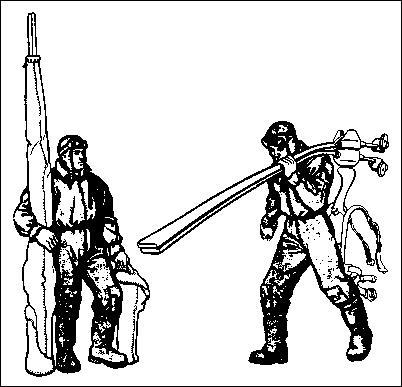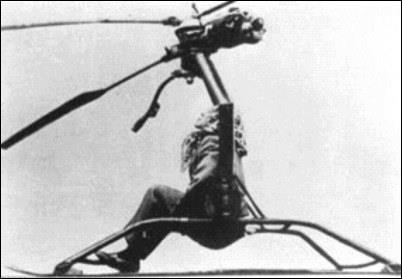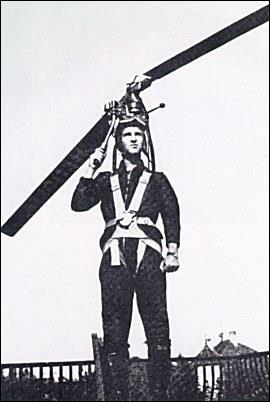The Austrian engineer, Paul Baumgartl, concerned himself during the Second World War with the design of small single-seat helicopters, in the suburbs of Vienna. It is not certain whether his work was sponsored by the German Government, but his machines were in the same category as those of Nagler-Rolz. Baumgartl's first product was the Heliofly I of 1941, which was little more than a strap-on autogyro glider for sporting use.


Heliofly III/57: Evolution of the previous one, this aircraft designed in 1942 was an evolution of the previous one. It was characterized by two single-blade contra-rotating rotors. Each blade was driven by an 8 hp Argus As 8 motor mounted on an arm extending it on the side opposite the axis of rotation, also providing dynamic compensation. Strapped to the back of an infantryman, this machine was deemed easy to use.
Heliofly III/59: When Paul Baumgärtl understood that he would have difficulty obtaining 8 hp engines, he redesigned his helicopter with a single 16 hp two-stroke engine, directly driving the lower blade which he was balancing, the upper blade being driven by transmission and balanced by a mass. Equipped with cyclic pitch control, this device was significantly more advanced than the previous one, the pilot being seated on a light tubular frame suspended under the rotor. Completed in 1943, the prototype is said to have reached 100 km/h during tests in the Vienna region. The end of the Second World War put an end to the development of the formula.
| Type |
Backpack helicopter Heliofly III/57 |
Backpack helicopter Heliofly III/59 |
| Engine |
1 Argus As 8 |
1 16 hp engine |
| Dimensions |
Length , height , span , wing area , |
Length 6,10 m, rotor diameter 2 x 6,10 m |
| Weights |
Empty , loaded , max. take off weight |
Empty 35 kg, loaded 120 kg, |
Baumgärtl Heliofly III






